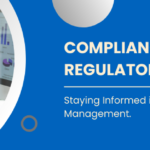Introduction
The growth of the DME industry, along with the changing healthcare landscape, has left many providers in a state of flux. The good news is that there are solutions to help your practice improve revenue and reduce costs. In this article, we will discuss strategies for billing and coding optimization and how they can help you grow your business.
DME providers can Optimize their billing and coding to increase revenue by following These steps
- Adjust your claim denials rate. The first step in optimizing your billing and coding is to ensure that you have an optimal claims denial rate. This means that the amount of denied claims should be less than 10% of the total submitted claims, which will help prevent payer audits or reviews from being triggered.
- Focus on revenue maximization strategies. In addition to reviewing how many patients are receiving Durable Medical Equipment (DME) services, it’s important for DME providers to also focus on maximizing their revenues per patient served through the use of effective revenue maximization strategies such as: increasing average charge amounts; improving upcoding accuracy; identifying opportunities for de-duplication; reviewing current contracts with third-party payers/payers before renewing them; ensuring compliance with Medicare Part B regulations regarding hospital referrals when appropriate–all while maintaining compliance with state requirements regarding parity laws (if applicable).
- Be sure that each itemized charge is coded correctly according to CMS guidelines. Otherwise, Medicare Part B will not pay its share of each procedure without delay or denial due to insufficient documentation of medical necessity
- Make sure that all claims are submitted on time so that the patient’s insurance company does not deny any changes related to those services.
- Make sure that you submit all claims to all insurance companies on time. If a claim is denied, your patient will be responsible for paying the bill in full
Billing Optimization Strategy
- Improve Coding accuracy
- Ensure compliance with billing and coding standards
- Update your billing and coding processes to be more efficient, Including:
- Implement a revenue cycle management program that includes an automated system that can identify errors in claims and prevent them from being sent out in the first place
- Use advanced analytics software to identify areas where you can save money on claims Processing;
- Automating manual tasks like claim edit, denials management, and remittance advice processing so that staff members’ tasks such as educating customers about new products or services
- Use data analytics tools to identify areas where you can Improve the quality of care, reduce patient complaints, and improve patient satisfaction scores.
Coding Optimization Strategy
Coding optimization is the process of ensuring that your coding meets the standards of the Centers for Medicare and Medicaid Services (CMS). This will help you avoid claim denials, penalties, and other financial impacts on your reimbursement.
The following are some strategies to help you optimize your DME billing:
-Ensure that you have the most current and accurate information on your patients’ diagnoses and procedures, including physician documentation.
-Adjust your billing software settings to ensure that it is compliant with any CMS audit requirements
– Ensure that your claims are coded correctly, Including Proper use of Modifiers.
– Perform a comprehensive review of your current costing and documentation practices to ensure that they comply with CMS rules.
– Participate in regular training sessions on coding best practices and other regulatory requirements
Revenue Maximization Strategies for DME Providers
- Identify the most common claim denials.
- Review your policies and procedures.
- Ensure that claims are submitted correctly.
- Make Ensure all documentation is complete, including supporting documentation for any codes billed on a claim (e.g., DME order forms).
- Ensure payment terms are correct by reviewing contracts with vendors to ensure timely payments are being made.
Review your medical loss ratio (MLR) and ensure that claims are being submitted to the right carrier. If you have multiple carriers, make sure that all claims are being submitted to the proper carrier. Check for errors in coding: If a provider is not sure which code to use, they can submit more than one claim with different codes on it. The payer will review both claims and try to determine which is correct based on documentation provided by the provider (e.g., clinical notes). Be sure that documentation supports any codes billed on a claim (e.g., DME order forms). If you have a high percentage of claims that are being rejected, it may be time to reevaluate your coding strategy. You may need to provide more documentation than what is required by the payer or make sure that you are using the correct codes.
HealthCare Consulting’s team of experts can help DME providers maximize revenue
With years of experience in the medical industry and a proven track record for increasing revenues, HealthCare Consulting has the tools and knowledge to optimize your billing and coding processes, ensuring that you are maximizing reimbursement for every claim submitted.
HealthCare Consulting will work with you to develop an efficient workflow that ensures accurate data entry with no mistakes. We’ll also assist in identifying opportunities for improvement within your practice so that all members of your organization are working on the same page when it comes to billing practices.
Our goal is simple: To help you increase revenue by providing solutions tailored specifically to each client’s needs!
Managing your claim denials is not your only option for optimizing your DME business
You can optimize your billing and coding to increase revenue. You can also take advantage of other strategies that can help you manage claims, inventory, and finances in a way that makes sense for your business.
As a DME provider, you need to be aware of all the options available so that you can make informed decisions about which ones will work best for your practice. Here are a few options that can help you boost revenue:
-Billing for complex cases and procedures, such as surgeries or diagnostic testing.
-Coding and billing under current CMS regulations.
-Pricing your services accurately to ensure you’re not losing money on every sale.
Conclusion
We hope you found this article helpful and informative. We know that there are many challenges facing DME providers today, but we also know that there are solutions. With the right tools and strategies in place, you can optimize your billing process and increase your revenue by maximizing both claims approvals as well as collection on denied claims. If you have any questions about our service or would like to learn more about how we can help your business achieve its goal, please contact us today!



